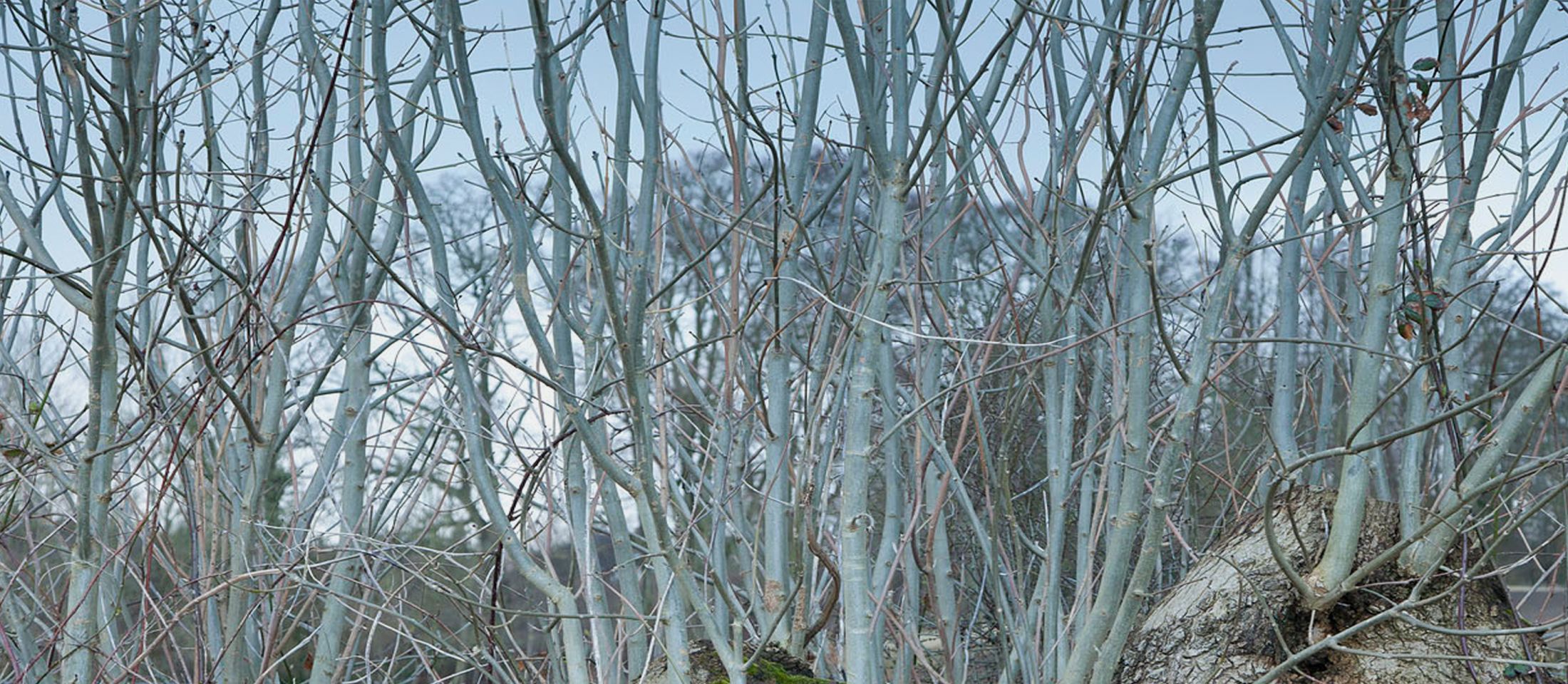
The effects of ash Dieback, West Kent. Photo: John Miller.

The effects of ash Dieback, West Kent. Photo: John Miller.
Since the discovery of the ash dieback disease in the UK in 2012 many scientists have established projects to study ash trees, looking at the movement of the fungal pathogen Hymenoscyphus fraxineus, the genetics of the tree, and resilient specimens.
The Forestry Commission have a hub of very useful information on ash dieback including some helpful links for identifying ash dieback.
forestry.gov.uk
Nornex is a network of scientists from eleven research institutions aiming to make tools to help understand how to deal with ash dieback, caused by Chalara fraxinea (Hymenoscyphus pseudoalbidus). Lead by the John Innes Centre in Norwich.
nornex.org
The Imperial College UNPICK study is a three year research project designed to investigate how UK publics understand and perceive the growing threats to tree health from invasive pests and diseases.
imperial.ac.uk/unpick
The Open Ash Dieback site is a hub for crowd sourcing information and genomic resources for ash dieback.
oadb.tsl.ac.uk
The Living Ash project will tag ash trees that might be resilient to the disease across the country to allow us to monitor them over time, if you would like to mark a tree you can request a kit on their website.
livingashproject.org.uk
The Ash Tree Genomes project is headed by Richard Buggs of Queen Mary, University of London and scientists in Richard Buggs’ lab have sequenced the genome of the European ash tree (Fraxinus excelsior), funded by an urgency grant awarded by the Natural Environment Research Council in 2013. www.ashgenome.org
UK Government scientists have set out the most up-to-date understanding of the disease. Their assessment concluded that:
The wilting is more pronounced in drought, and the fungus forms bark necrosis that in turn leads to staining of the wood. Regrowth and epicormic sprouts shoot directly from the points of infection. Some species of ash are more susceptible than others to infection, such as ‘Pendula’ and ‘Jaspidea’, others species have low susceptibility, ‘Atlas’ and ‘Angustifolia’. Some of the species with high susceptibility, such as Pendula also show over time an encouraging recovery from the attack though mature specimens fare better than young cultivars. Trees younger than 40 years seem to be more sensitive.